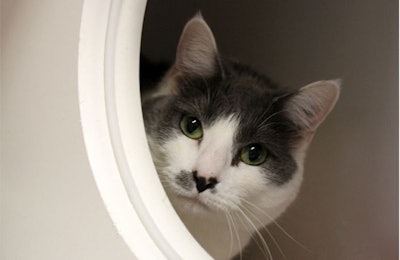
The most important thing that can be said about pet market sales growth over the last 10 years is that it’s been the "Decade of the Dog." U.S. household ownership rates for dogs, the most expensive common pets in terms of products and services, jumped from 36% to 40%.
The second most important thing — and arguably the most important challenge to continued market growth — is that ownership rates for all other types of pets, including cats, has remained flat at best.
Over the 2009–19 period, Simmons survey data show cat ownership rates hovering in the 24%–26% range, with slightly higher rates at the beginning of the period and slightly lower rates most recently (see Table 1). Ownership rates for all other types of pets have tended to slowly and steadily decline, despite some periods in the sun for specific pet types such as reptiles.

TABLE 1: Overall pet ownership has increased in the last decade, as has dog ownership specifically, while cat ownership is lower now than it was 10 years ago.
Why aren’t cats getting the same love as dogs?
Part of the issue is that the market has gone to the dogs, such that many prime demographics for cat ownership skew even higher as demographics for dog ownership. For example, households with an income of US$150,000+ have grown from 9% to 16% of the U.S. population, or from 10.1 million to 19.7 million. But while these households with higher discretionary-spending power over-index significantly for cat ownership (at an index of 112, or 12% above the overall household norm), they over-index even more sharply for dog ownership (at an index of 121).
Another part of the issue may be that pet food manufacturers, retailers and marketers are giving cats short shrift. Many cat owners certainly think so. In Packaged Facts’ summer 2019 survey of pet owners, we asked cat owners whether they perceive that cats, compared with dogs, are “sometimes treated as second-class” by various types of players in the pet industry (see Table 2).

TABLE 2: Half or nearly half of cat owners surveyed believe that their pets are treated as second-class citizens in multiple pet outlets.
- Veterinarians are the least guilty, or at least relatively less guilty, with 22% of cat owners strongly agreeing and 41% either strongly or somewhat agreeing that vets sometimes relegate cats to the second-class compartment.
- Pet specialty stores and pet food/treat manufacturers are somewhat more guilty, with 44% or 45% (respectively) of cat owners either somewhat or strongly agreeing that cats sometimes get second-class treatment from these product sources.
- General stores that sell pet products are the guiltiest, with fully half (51%) of cat owners agreeing that general merchandise stores or superstores sometimes treat cats second-best.
What do cat owners want from the industry?
Cat-owning survey respondents who agreed that pet food/treat makers or stores sometimes give cats second-class treatment were further asked, on an open-ended basis, for examples of better cat products or set-ups they’d like to see.
Responses ran the gamut: “better selection of products (other than different sizes/counts of the same thing), “more natural things for cats to eat,” “better selection of food for aging cats” (or hairball or urinary infection or raw food formulations), “chewy hard food,” “healthier canned food,” “better food topper products ” and “more nutritious and delicious cat treats” — this last one not always an easy sync, in human groceries as in pet food.
More generally, cat owners called for equality in product offerings and product displays for cats vis-a-vis dogs. “There’s way too much dog stuff and not enough cat stuff,” as one respondent put it, with a frustration that often came through in consumer comments. By extension, many cat owners indicated that sub-optimal store selections send them, not necessarily as their first choice, to the endless shelf of online: “am forced to buy online because pet stores don’t carry healthy foods for cats.” Others, including multiple-cat owners, complained of lack of more economical larger sizes: “Excuse me, but some of us like to buy cat products in bulk as well; why are we not allowed to reap savings like dog owners?”
Just “more respect for cats,” as one respondent put it, could certainly help usher in the next wave of growth in the pet food market. And some consumer suggestions were good for the goose as well as the gander. “Samples of the pet food to bring home” was one sensible suggestion. Another respondent noted that pet food humanization — and bagging — haven’t caught up with the “pets as family” times: “One issue that always ticks me off if how pet foods are stocked near cleaning supplies. Why? The other thing I hate is how people bag pet food alone or won’t put a can of pet food in a bag full of other cans or something. So stupid.”



















